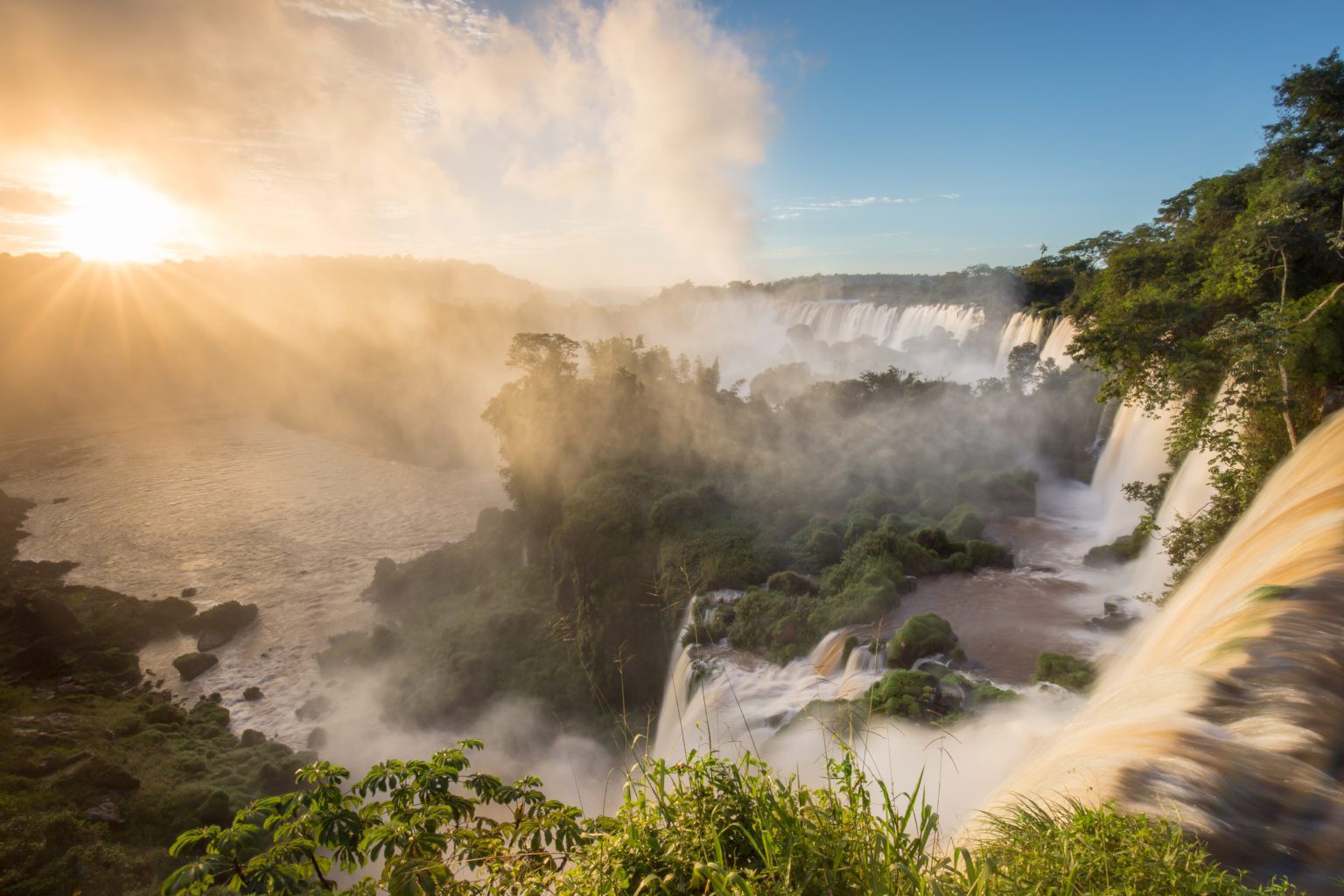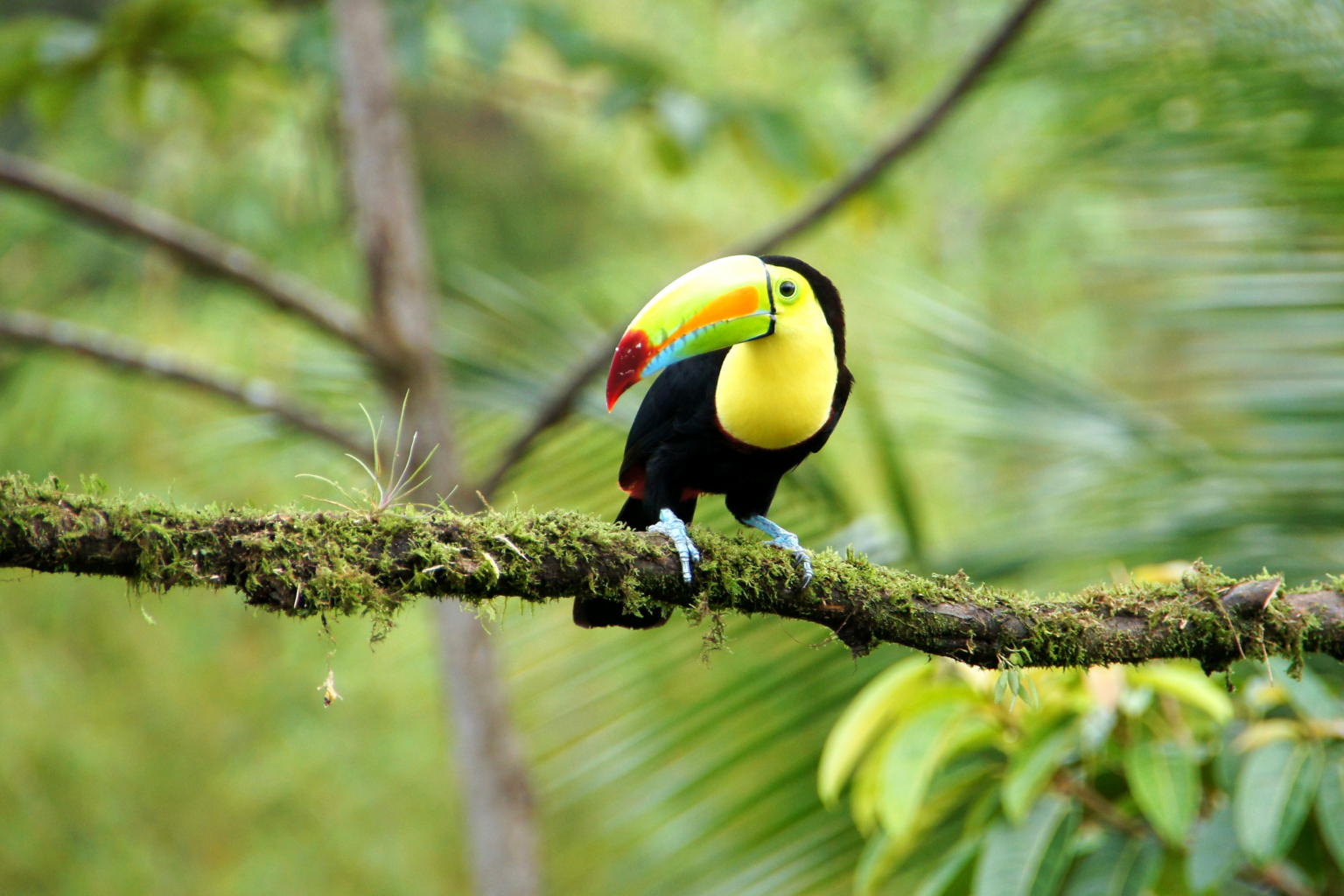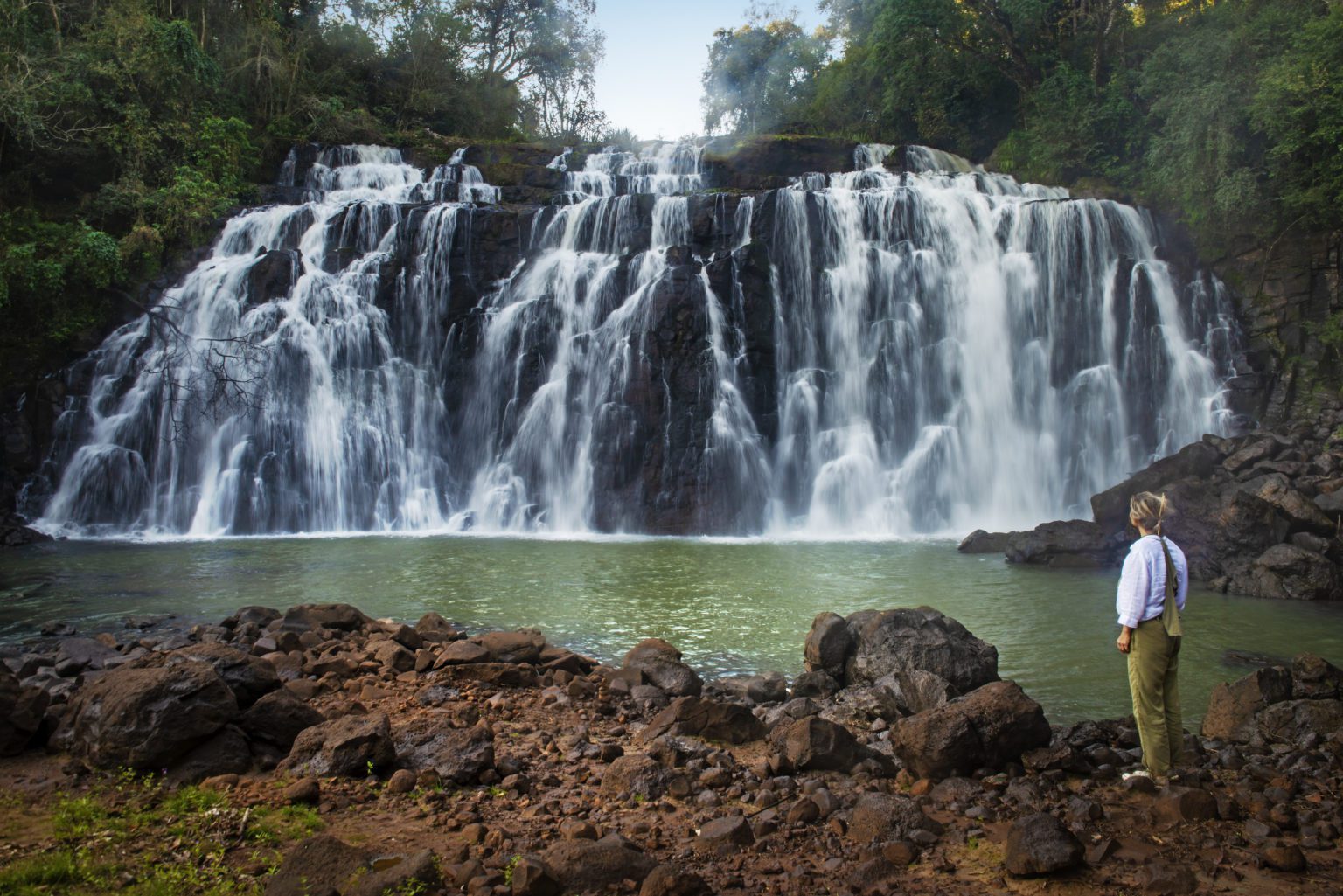Luxury Iguazú Falls vacation
Behold one of Mother Nature’s most exquisite works of art: Iguazú Falls. Seated on the border of Argentina and Brazil, this awe-inspiring collection of 275 thundering cascades is a UNESCO World Heritage Site and one of the New 7 Wonders of Nature.
Why visit Iguazú Falls?
There’s nothing like standing, humbled, at the foot of one of the planet’s most powerful waterfalls. Travelers can hike along the Iguazú National Park’s winding walkways to witness the cascade of Garganta del Diablo (“Devil’s Mouth”), which plunges 269 feet into a barely visible pool. Animal lovers will delight while spotting capuchin monkeys, tapirs, and caymans in the surrounding subtropical rainforest; and thrill-seekers will jump at the opportunity to get soaked to the skin as they zoom beneath the falls in a speedboat. In short, if you’re yearning to experience Mother Nature at her wildest, purest, and most exciting, an Iguazú Falls trip should be written into your extraordinary South America journey.
What to do in Iguazú Falls
- One trip, two countries: Iguazú Falls straddles the Argentina-Brazil border. We recommend touring both the Argentinian and Brazilian sides for opposing vantage points: up close and then zoomed out.
- Walk the system of catwalks to cross gorges next to bursting water.
- Board a boat to get your adrenaline pumping during an exhilarating ride beneath the falls.
- Track wildlife in the jungle that envelopes the falls; it teems with species like white-eyed parakeets, giant anteaters, howler monkeys, and elusive jaguars.
- Kayak down the Paraná River, one of the fastest and longest-running rivers in the world.
- Chat with locals over a gourd or two of traditional yerba mate tea—a social ceremony that’s an integral part of everyday life in this part of the world.
- Learn how to whip up local specialties like empanadas or alfajores during a cooking class in Puerto Iguazú.
Key travel info for Iguazú Falls
Iguazú Falls sits right on the Brazil-Argentina border and spans both Iguazú National Park (Argentina) and Iguaçu National Park (Brazil) to form one large, contiguous protected area.
Puerto Iguazú in Argentina and Foz do Iguaçu in Brazil are both located near the falls. Admittedly, they lack some of the character that South America’s most charming cities are known for, but you’ll find all the handy necessities you need, like pharmacies, shops, and restaurants.
- Fly to Puerto Iguazú (IGR) in Argentina (there are daily flights to and from Buenos Aires). Alternatively, fly to Foz do Iguaçu (IGU) in Brazil (there are daily flights to and from Sao Paulo and Rio de Janeiro). Foz do Iguaçu is the closest airport to Iguazú Falls.
- It’s easy to connect to Iguazú Falls from the U.S. with a stop-over in Sao Paulo.
- If you want to know how to get to Iguazú Falls by car, the falls are just one day’s drive from the Iberá Wetlands in the north of Argentina.
Most people plan to spend two days at Iguazú Falls so they can enjoy one day on each side of the falls. If you can stay longer, the best Iguazú Falls tours span three or four days. This is enough time to visit both sides of the falls, and to explore the surrounding jungles and rivers.
Expect to spend around $700 per person per day for a luxury Iguazú Fall trip if you’d like to stay at a very nice hotel and experience the falls with a private guide.
When it comes to choosing where to stay in Iguazú Falls, make sure you book well in advance. Iguazú Falls is one of the most popular destinations in both Argentina and Brazil, frequented by both local and international tourists, and high-end hotels in the area are relatively limited.
It’s also important to book earlier than later if you plan to travel during festive season (December 20 to January 5) or if your visit coincides with a local holiday.
When is the best time to visit Iguazú Falls?
Any time of year is a great time for an Iguazú Falls trip. Water levels do fluctuate, but the weather tends not to impact the overall viewing experience and you’re likely to get a little wet no matter the month, thanks to the misty spray and subtropical surrounds.
When planning your trip, it’s worth taking the following into consideration:
- Water levels are at their highest in the summer (November to February). Iguazú Falls weather is hot, humid, and rainy at this time.
- Iguazú Falls weather during dry season (March to June) is sunnier but not as humid.
- The temperatures are very comfortable in the winter (July to October). The falls have less volume at this time, but they are still an incredible sight to behold, so this is arguably the best time to take an Iguazú Falls tour.
Where to stay in Iguazú Falls
There are two upscale Iguazú Falls hotels located within the national parks: the Gran Meliá Iguazú on the Argentine side and the Belmond Hotel das Cataratas on the Brazilian side. Both properties boast fabulous views from the common areas and from many guest rooms. Staying at either property affords you a major advantage: you can explore crowd-free before and after the national park’s official visiting hours.
If you’re open to staying beyond park boundaries, a lodge like Awasi Iguazú offers Relais & Châteaux luxury and exceptional guiding in a sublime Atlantic rainforest setting.
Iguazu Falls FAQs
A UNESCO World Heritage Site since 1984, Iguazú Falls is considered to be the most dramatic waterfall in the world. Unique and naturally diverse, the area showcases 275 multi-drop and tiered cascades, including the breathtaking “Garganta del Diablo” (Devil’s Throat), which is more than 269 feet high. (That’s almost twice as high as Niagara Falls.) The entire region is overflowing with natural wonders and abundant wildlife, which explains why it was designated one of the New 7 Wonders of Nature back in 2011.
The waterfalls measure 1.7 miles wide and the highest drop is 269 feet. The falls have an average flowrate of 62,010 cubic feet per second.
Iguazú Falls tumble over the cliffs on the border between the Argentinian province of Misiones and Brazilian state of Paraná. Two-thirds of the falls are on the Argentinian side.
You can’t swim near Iguazú Falls, but you can take a boat ride underneath them—and you’ll get quite wet! Alternatively, you can take an excursion to the more tranquil parts of the Paraná River, where you can swim to your heart’s content.
Yes. The infrastructure is well-maintained in and around Iguazú Falls. Just keep your belongings in a dry bag and prepare to get very wet!
Luxury Iguazú Falls trip itineraries
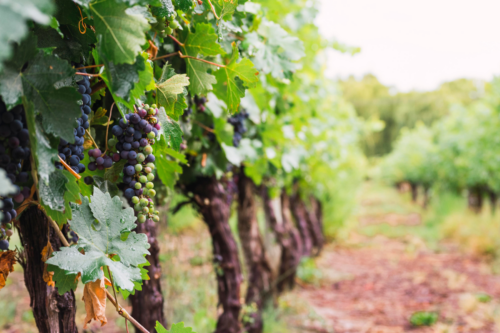
- Itinerary
Argentina: Wine and Waterfalls
Wine tasting in Mendoza, natural wonders at Iguazu Falls, urban charms in Buenos Aires
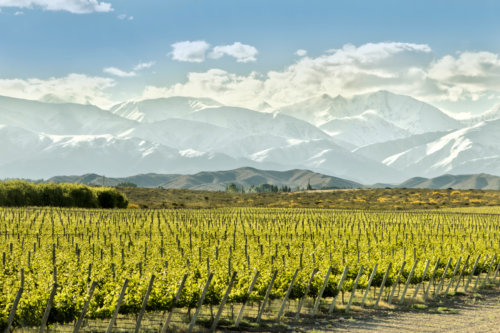
- Itinerary
The Best of Argentina
Argentine lakes, glaciers, waterfalls and wine-tasting
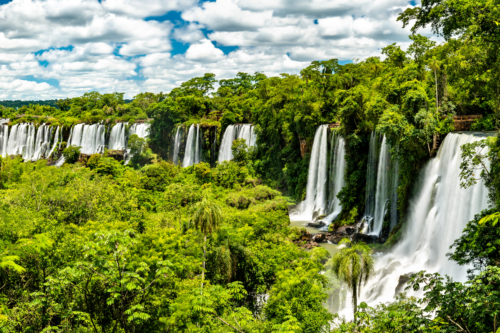
- Itinerary
Luxury South America: Best of Argentina & Chile
Luxury lodges and top experiences across South America’s most iconic regions
Iguazú Falls hotels
Other destinations to add to your Iguazú Falls trip
Plan your Trip
Ready to start planning your own incredible adventure? We make the process stress-free and enjoyable.

